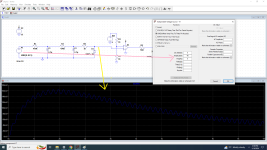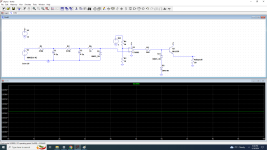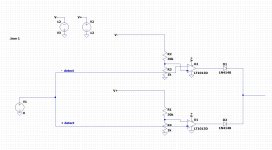You need bipolar caps ideally, and you must trigger on either polarity - the amp output could latch to either rail, both are equally disasterous for the speaker!
And it should probably latch off for a while (monostable circuit). When I was testing my speaker protect circuit I realized this would be handy. Mine also detects if the rail voltages are low so doubles as a de-thump circuit. I followed the circuit Doug Self describe in one of his great books.
And it should probably latch off for a while (monostable circuit). When I was testing my speaker protect circuit I realized this would be handy. Mine also detects if the rail voltages are low so doubles as a de-thump circuit. I followed the circuit Doug Self describe in one of his great books.
Seems to work fine in " detecting " dc greater than 380mV either rail .
1. How fast it does it would depend on op amp speed ?. is this " worth " building ? or just for curiosity , learning .
2. Can you share your schematic based on Doug Self, I can't find it.
Thank you Mark for answering my "noob" questions .
- Bruno.
Will the input filter " upset " the amplifier ?. the 10uF in parallel ?. Second photo.
1. How fast it does it would depend on op amp speed ?. is this " worth " building ? or just for curiosity , learning .
2. Can you share your schematic based on Doug Self, I can't find it.
Thank you Mark for answering my "noob" questions .
- Bruno.
Will the input filter " upset " the amplifier ?. the 10uF in parallel ?. Second photo.
Attachments
Last edited:
The speed is determined by the RC time constant and threshold voltage, not the comparator.
The caps need to be bipolar or they could burst even.
The caps need to be bipolar or they could burst even.
?.Will the input filter " upset " the amplifier ?. the 10uF in parallel ?. Second photo.



